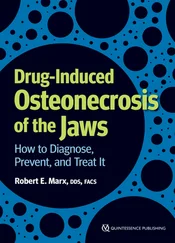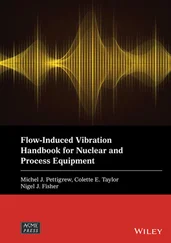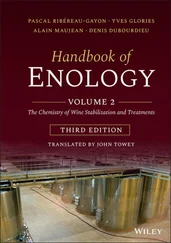1 Cover
2 Title Page
3 Copyright Page
4 Dedication Page
5 List of Contributors
6 Preface to Handbook of Aggregation‐Induced Emission
7 Preface to Volume 3: Applications
8 1 AIE‐active Emitters and Their Applications in OLEDs 1.1 Introduction 1.2 Conventional Aggregation‐induced Emissive Emitters 1.3 High Exciton Utilizing Efficient Aggregation‐induced Emissive Materials 1.4 Conclusion and Outlook Acknowledgments References
9 2 Circularly Polarized Luminescence of Aggregation‐induced Emission Materials 2.1 Introduction of Circularly Polarized Luminescence 2.2 Small Organic Molecules 2.3 Macrocycles and Cages 2.4 Metal Complexes and Clusters 2.5 Supramolecular Systems 2.6 Polymers 2.7 Liquid Crystals 2.8 Conclusions and Outlook References
10 3 AIE Polymer Films for Optical Sensing and Energy Harvesting 3.1 Introduction 3.2 Working Mechanism of AIEgens 3.3 AIE‐doped Polymer Films for Optical Sensing 3.4 AIE‐doped Polymer Films for Energy Harvesting 3.5 Conclusions Acknowledgments References
11 4 Aggregation‐induced Electrochemiluminescence 4.1 Introduction: From Electrochemiluminescence to AI‐ECL 4.2 Classification and Properties of AI‐ECL luminophores 4.3 Applications and Outlooks References
12 5 Mechanoluminescence Materials with Aggregation‐Induced Emission 5.1 Introduction 5.2 Mechanoluminescence of Organic Molecules Not Mentioned AIE 5.3 ML–AIE Materials 5.4 Summary and Outlook Acknowledgments References
13 6 Dynamic Super‐resolution Fluorescence Imaging Based on Photo‐switchable Fluorescent Spiropyran 6.1 Introduction 6.2 Materials and Methods 6.3 Super‐resolution Imaging of Block Copolymer Self‐assembly 6.4 Optimization of Spatial Resolution 6.5 Temporal Resolution 6.6 Dynamic Super‐resolution Imaging 6.7 Conclusion and Prospection Acknowledgment References
14 7 Visualization of Polymer Microstructures 7.1 Introduction 7.2 Synthetic Polymers 7.3 Biological Polymers 7.4 Summary and Perspective Acknowledgments References
15 8 Self‐assembly of Aggregation‐induced Emission Molecules into Micelles and Vesicles with Advantageous Applications 8.1 General Background of Micelles and Vesicles 8.2 AIE Micelles 8.3 AIE Vesicles 8.4 Summary and Outlooks References
16 9 Vortex Fluidics‐mediated Fluorescent Hydrogels with Aggregation‐induced Emission Characteristics 9.1 Introduction 9.2 Tunning the Size and Property of AIEgens, a New Approach to Create FL Hydrogels with Superior Properties 9.3 AIEgens for Characterization of Hydrogels 9.4 Conclusion References
17 10 Design and Preparation of Stimuli‐responsive AIE Fluorescent Polymers‐based Probes for Cells Imaging 10.1 Introduction 10.2 Design and Preparation Strategies for AIE–SRP Probes 10.3 Application of AIE–SRP Probes 10.4 Summary and Prospect Acknowledgements References
18 11 AIE 11.1 Introduction 11.2 Cellular Imaging 11.3 Biosensing 11.4 Conclusion References
19 12 AIE-based Systems for Imaging and Image-guided Killing of Pathogens 12.1 Introduction 12.2 Bacteria Imaging Based on AIEgens 12.3 Bacteria‐targeted Imaging and Ablation Based on AIEgens 12.4 Bacterial Susceptibility Evaluation and Antibiotics Screening 12.5 Sensors for Bacterial Detection Based on AIEgens 12.6 Conclusions and Perspectives References
20 13 AIEgen‐based Trackers for Cancer Research and Regenerative Medicine 13.1 Introduction 13.2 AIEgens for Long‐term Cancer Cell Tracking 13.3 AIEgens for Stem Cell‐based Regenerative Medicine and Regeneration‐related Process 13.4 Conclusion Acknowledgment References
21 14 AIE‐active Fluorescence Probes for Enzymes and Their Applications in Disease Theranostics 14.1 Introduction 14.2 AIE‐active Fluorescence Probes for Enzymes and Their Applications in Disease Theranostics 14.3 Summary and Outlook References
22 15 AIE Nanoprobes for NIR‐II Fluorescence In Vivo Functional Bioimaging 15.1 Introduction 15.2 NIR‐II Fluorescence Macroimaging In Vivo 15.3 NIR‐II Fluorescence Wide‐field Microscopic Imaging In Vivo 15.4 NIR‐II Fluorescence Confocal Microscopic Imaging In Vivo 15.5 Summary and Perspectives Acknowledgments References
23 16 In Vivo Phototheranostics Application of AIEgen‐based Probes 16.1 Introduction 16.2 AIE Fluorescent Probe with Photodynamic Therapy Function 16.3 AIE Photoacoustic Probe with Photothermal Therapy Function 16.4 Application of AIE Fluorescent Probe in Synergistic Therapy 16.5 AIE Fluorescent Probe with Immunotherapy Function 16.6 Conclusions and Perspectives References
24 17 Red‐emissive AIEgens Based on Tetraphenylethylene for Biological Applications 17.1 Introduction 17.2 TPE‐based AIEgens with Dicyanovinyl Group 17.3 Pyridinium‐based AIEgens 17.4 Summary and Perspectives References
25 18 Smart Luminogens for the Detection of Organic Volatile Contaminants 18.1 Introduction 18.2 Smart AIE Nanomaterials and their Sensing Applications for OVCs 18.3 Summary and Outlook References
26 19 Bulky Hydrophobic Counterions for Suppressing Aggregation‐caused Quenching of Ionic Dyes in Fluorescent Nanoparticles 19.1 Introduction 19.2 Counterion Effect in Nanomaterials Based on Conventional Bright Fluorophores 19.3 Counterions and Aggregation‐induced Emission 19.4 Dye‐loaded Polymeric NPs and the Crucial Role of Bulky Counterions 19.5 Conclusions Acknowledgments References
27 20 Fluorescent Silver Staining Based on a Fluorogenic Ag +Probe with Aggregation‐induced Emission Properties 20.1 Introduction 20.2 Historical Background of Silver Staining 20.3 Conventional Silver Staining Methods 20.4 Fluorogenic Probes for Ag +Detection 20.5 Fluorogenic Silver Staining in Polyacrylamide Gel 20.6 Concluding Remarks References
28 Index
29 End User License Agreement
1 Chapter 11Table 11.1 Examples of AIE probes used to detect ions.Table 11.2 Examples of AIE probes used to detect enzymatic activity.
2 Chapter 20Table 20.1 Comparison of conventional silver stain methods and fluorogenic s...Table 20.2 Comparison of different protein detection methods.
1 Chapter 1 Figure 1.1 The OLED devices and aggregated‐state lightening. (a) The constru... Figure 1.2 Molecular structures of TPE‐based conventional blue AIE‐active em... Figure 1.3 Molecular structures of green conventional AIE‐active emitters. Figure 1.4 Molecular structures of red conventional AIE‐active emitters. Figure 1.5 Molecular structures of conventional AIE‐active emitters to const... Figure 1.6 Aggregation‐induced phosphorescent emitters. Figure 1.7 Chemical structures of aggregation‐induced delayed fluorescent em... Figure 1.8 The structures of hybridized local and charge transfer materials ...
2 Chapter 2 Figure 2.1 Molecular structures of chiral AIEgens 1– 13and corresponding g lu... Figure 2.2 Molecular structures of chiral AIEgens 14– 25and corresponding g l... Figure 2.3 Molecular structures of chiral AIEgens 26– 29[22]. Figure 2.4 (a) Molecular structure of chiral AIEgen enantiomers 30and corre... Figure 2.5 Molecular structures of chiral AIEgens R ‐ 31and S ‐ 31and correspo... Figure 2.6 (a) Molecular structure of chiral AIEgen 32and corresponding g lu... Figure 2.7 (a) Molecular structures of TPE tetracycle enantiomers P ‐ 33and M Figure 2.8 (a) Synthesis of organic cubes from six TPE tetra‐aldehyde units ... Figure 2.9 Molecular structures of chiral Pt(II)‐Salen complexes 36– 40
Читать дальше












